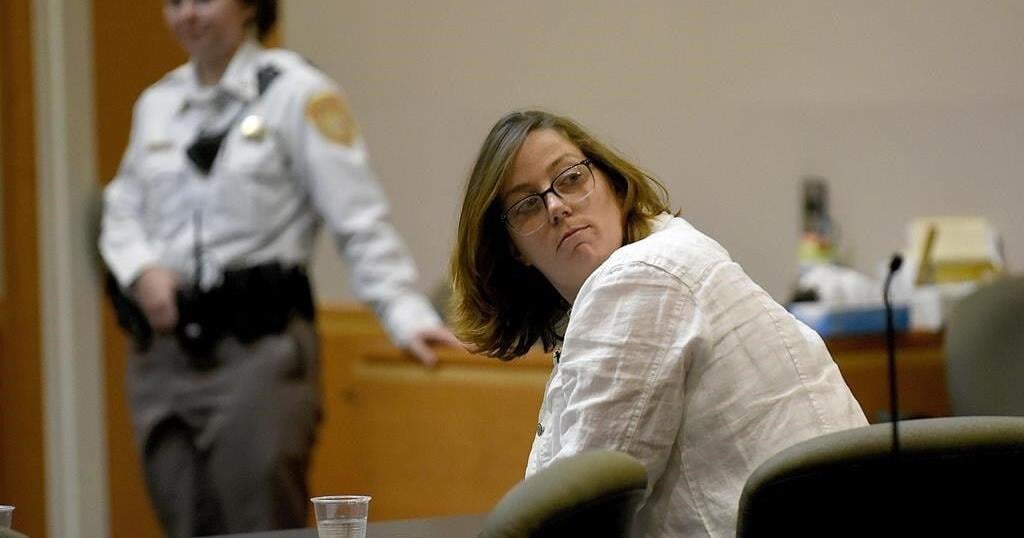CONCORD, N.H. (AP) — The daughter of baseball Hall of Fame pitcher Dennis Eckersley testified at her trial Wednesday that she didn’t know she was pregnant when she gave birth in the woods in subfreezing temperatures on Christmas night in 2022 and thought her baby had died.
Alexandra Eckersley, 27, was homeless at the time and living in a tent in Manchester, New Hampshire. A forensic psychologist testified earlier Wednesday that Eckersley was suffering from mental health and developmental issues diagnosed since childhood, as well as substance abuse disorder. She was not being treated for those conditions at the time. Her trial started July 25.
Prosecutors said her son was left alone for more than an hour as temperatures dipped to 15 degrees Fahrenheit (minus 9.4 degrees Celsius) and suffered respiratory distress and hypothermia.
Eckersley pleaded not guilty to charges of assault, reckless conduct, falsifying evidence and endangering the welfare of a child.
She said she started having stomach pains earlier that day and thought she was constipated, but didn’t feel any better after a man who was staying with her gave her ibuprofen and medicine for an upset stomach.
“It felt like a knife stabbing into my stomach,” Eckersley said of the pain.
She said didn’t know what labor pains felt like. When asked by her attorney, Kim Kossick, when she realized she had been pregnant she said, “when the baby came out of me.”
She said she didn’t look at her baby and asked the man to take his pulse because she didn’t know how. “He said there was no pulse,” Eckersley said.
She had been bleeding and said she and the man decided to call for help, but had no cellphone service. They started walking toward an ice arena. On their way, Alexandra Eckersley experienced afterbirth. She testified she thought she was having a second child.
The baby was left in the tent.
“Did it occur to you to pick him up and bring him with you?” Kossick asked.
“No,” Eckersley said.
“Why not?”
“Well, I thought he was dead.”
Eckersley told a 911 dispatcher that she had given birth to two children, and that one had lived for less than a minute, and the other died immediately, her lawyers said.
Prosecutor Alexander Gatzoulis said Eckersley intentionally led first responders to a different location, because she did not want to get into trouble and did not tell them at first that the baby had cried after she gave birth. She was the only one who could lead them to the baby because the man had left, he said.
“You did not tell them where the baby was,” he said.
“That is correct,” Eckersley said.
She also said “correct” when Gatzoulis said she didn’t tell the dispatcher or the first responders that the baby had cried, and that she said she would give an officer a call when the baby was found.
“Essentially what you were telling them is that they could stop searching and you would get back to them if you found the baby,” Gatzoulis said.
“It’s not what I meant by it, but potentially, that could be taken that way,” she said.
Eventually, Eckersley took them to the tent, where they found the baby, alive.
On redirect, Eckersley said she knew some of the statements she made to police at the time were wrong, but that she didn’t know that. She said she was afraid of the man she was staying with. He was arrested along with Eckersley and was sentenced last August to a year in jail after pleading guilty to a child endangerment charge.
Eckersley has been living full-time with her son and family in Massachusetts since earlier this year.
The Eckersley family released a statement shortly after she was arrested, saying they had no prior knowledge of her pregnancy and were in complete shock. The family said she has suffered from “severe mental illness her entire life” and that they did their very best to get her help and support.
Dennis Eckersley, who attended the trial this week, was drafted by Cleveland out of high school in 1972 and went on to pitch 24 seasons for Cleveland, Boston, Chicago, Oakland and St. Louis. He won the AL Cy Young and MVP awards in 1992 while playing for the Oakland Athletics. After his playing days, Eckersley retired in 2022 from broadcasting Boston Red Sox games.
